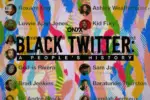Instant Trouble
You should be using Facebook and Twitter to spread information, not verdicts.
By Timothy K. DesJarlais, University of Arizona
Nearly everyone has a cell phone, and most cell phones have a camera; as a result, within minutes, a video or picture can go viral, spreading across the globe.
This kind of information blitz is fairly unprecedented in its scale. Previously, the printing press, telegraph, telephone, radio and television served as the sources for breaking news and inciting outrage. But, while each form of technology was faster and more efficient than the previous, none compare to social media.
Facebook, Twitter, Instagram, Tumblr, YouTube and other modern-day apps have connected humans in ways never thought possible; although, some argue the deepness of that connection. The power of these apps isn’t just in the user’s ability to post what they like, but the ability for others to share, repost or retweet their content.
A post by one person, if it’s shared by ten friends and then shared by each of their ten friends, can be shared and seen by hundreds of thousands in a matter of minutes. This is a nutshell definition for viral content, which can range in content from cute kitten videos to safety alerts.
However, some viral content invokes feelings of disgust, horror, shock or outrage. Often, the response on social media is to organize boycotts, but some dispute whether or not those boycotts have actually been effective.
These viral pictures and videos can have real-world effects, like causing stocks to lower or increase. Not too long ago, United Airlines fell into this pit when they forcibly removed a passenger from one of their flights.
Video footage of the incident, recorded by the phones of passengers on the plane, quickly went viral and sparked a massive backlash against United Airlines, leading to the company issuing multiple apologies and undergoing a public-relations nightmare.
But, this isn’t the only viral incident on social media that has made waves. There was the 2016 incident involving Harambe, the gorilla at the Cincinnati Zoo, who was shot after a child fell into his enclosure. Plus, earlier this year, Pepsi was embroiled in controversy when everyone went ballistic on social media about their ad starring Kendall Jenner.
Certainly, even before social media or cell phones existed, people were outraged about events. In fact, that’s what mobs are primarily built around, leading you to conclude that viral social-media outrage could be accurately described as a cybermob
And like a mob, social-media outrage can diminish as quickly as it started. For example, when the heartrending image of a Syrian child who survived an airstrike went viral, it made its rounds on the internet, and the outrage was palpable.
Yet, roughly a year before, a similar image of a Syrian refugee boy who drowned also became a sensation. In both cases, the outrage may have sparked discussion, led to news stories, inspired talk-show hosts and made the public demand action. Yet, years have come and gone with little if anything being done for the Syrians.
Much of the internet outrage that takes place, in fact, seems to fizzle off as participants lose interest or become bored. In fact, sometimes, the outrage may be counterproductive to the cause it promotes.
After all, many users think they have done their part by tweeting a hashtag, reposting an image and demanding justice in a status update before returning to their lives like nothing happened. Actually, though, they have contributed little and ensured the viral crisis because of a temporary sensation, withering away with time.
Certainly, spreading information about injustice, inequality and suffering around the world is important, as it can motivate people to take action. And I by no means advocate for unplugging yourself, but perhaps, it’s time to go beyond outrage and into action.

Some examples of social-media outrage have led to actual change, such as the protests in Egypt against former President Hosni Mubarak, which ultimately led him to step down as president. Some viral stories have also resulted in fundraisers that have helped cover the costs of affected individuals. But, often, it’s too easy to momentarily feel bad before moving onto the next post in your feed.
Much like mobs, cybermobs and social-media outrage can be triggered by false information. Social media is a form of human communication; therefore, it isn’t exempt to rumors, exaggerations or scenes taken out of context.
In fact, social media provides fuel for rumors and false tales. Many have heard of “fake news,” like the false story that circulated on the internet in Germany, accusing a refugee of being a terrorist, when he was not. It resulted in him being slammed with a tidal wave of unwarranted negative publicity.
Information is important, and the more informed society is, the better. However, just because social media can connect people from all over the globe, it doesn’t mean that society is more informed. The ability to get involved in hashtag campaigns, repost stories or share your own opinion should not take the place of getting out there and taking action.
You don’t need to unplug yourself from technology, but you should plug yourself into causes that you support. Don’t let your activism begin and stop online with a post and a tweet, and do not be part of a cybermob that will fade away in a week. Volunteer at your local food bank, walk dogs for your local pet shelter or find another way to take your action beyond the virtual world of the internet.

















